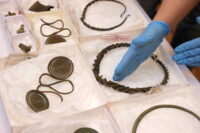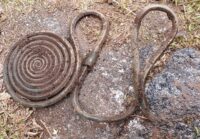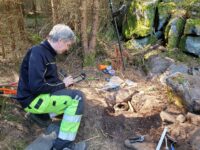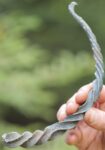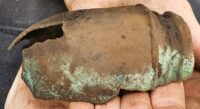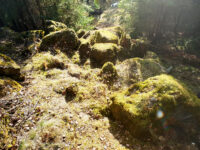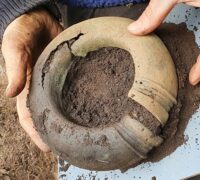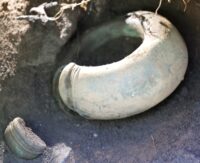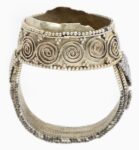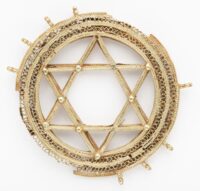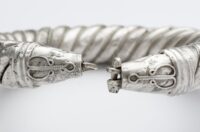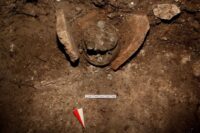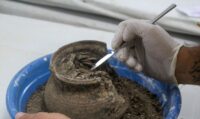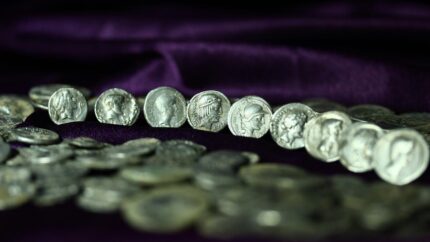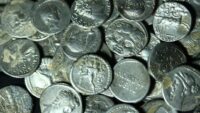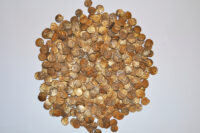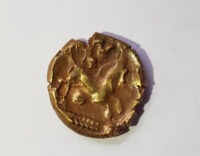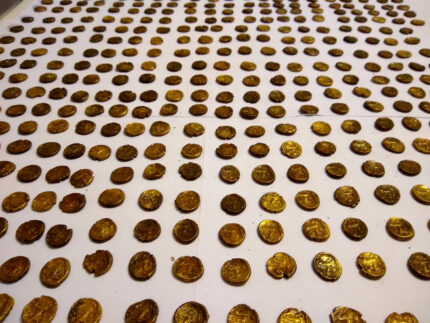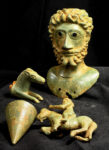 A hoard of nationally important Roman ritual bronzes that includes a bust of Emperor Marcus Aurelius have sold at auction to an unknown buyer for £185,000 ($260,000) thanks to the still-open loophole in the 1996 Treasure Act.
A hoard of nationally important Roman ritual bronzes that includes a bust of Emperor Marcus Aurelius have sold at auction to an unknown buyer for £185,000 ($260,000) thanks to the still-open loophole in the 1996 Treasure Act.
The assemblage was discovered last May by metal detectorists James Spark and Mark Didlick in a field near the village of Ampleforth in the Ryedale district of North Yorkshire. They first unearthed a figurine of a horse and rider. A foot away they dug up the bust and a conical plumb bob. They found the a key handle in the shape of the forequarters of a horse the next day. The hoard was then taken to York Museum and examined by archaeologists.
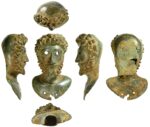 The bust is finely modelled, with detailed facial features and curled hair. There are rivet holes on the front of the chest plate indicating that it was originally mounted onto something, probably a priestly scepter. The features identify the bust as a portrait of Marcus Aurelius, which means the deposit dates to the 2nd century at the earliest.
The bust is finely modelled, with detailed facial features and curled hair. There are rivet holes on the front of the chest plate indicating that it was originally mounted onto something, probably a priestly scepter. The features identify the bust as a portrait of Marcus Aurelius, which means the deposit dates to the 2nd century at the earliest.
Two comparable deposits found in the 19th century also included a scepter 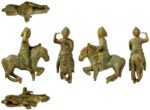 head bust of an emperor, horse and rider figurines and mounts and fittings. The plumb bob has no parallel in votive deposits. Archaeologists believe the inclusion of the key component of a surveyor’s tool may be an indication that the offering was related to construction, perhaps asking the sanction of the gods for the creation of a new town boundary (pomerium).
head bust of an emperor, horse and rider figurines and mounts and fittings. The plumb bob has no parallel in votive deposits. Archaeologists believe the inclusion of the key component of a surveyor’s tool may be an indication that the offering was related to construction, perhaps asking the sanction of the gods for the creation of a new town boundary (pomerium).
Despite the great archaeological significance of the assemblage, it does not qualify as treasure because it’s not two or more coins 300 years old or older,  not made of precious metal and not prehistoric. This loophole springs from a ludicrously outdated definition of treasure established in medieval common law. The UK’s Department for Digital, Culture, Media and Sport finally addressed the problem and a revision of the act that would plug the loophole was written in 2019. Unfortunately the complexities of the legislative process — public consultation period, further research, the publication of said research, the official drafting of the legislation and its passage by Parliament — mean it won’t actually be law until 2022 at the earliest.
not made of precious metal and not prehistoric. This loophole springs from a ludicrously outdated definition of treasure established in medieval common law. The UK’s Department for Digital, Culture, Media and Sport finally addressed the problem and a revision of the act that would plug the loophole was written in 2019. Unfortunately the complexities of the legislative process — public consultation period, further research, the publication of said research, the official drafting of the legislation and its passage by Parliament — mean it won’t actually be law until 2022 at the earliest.
So now the Ryedale Ritual Bronzes join the Crosby Garret helmet, the Roman licking dog, the Allectus aureus and who knows how many other treasures of cultural patrimony that haven’t made the press. Let’s hope the buyer turns out to be a museum, or at least a generous donor.
